I was now familiar with Riga and went back to the kind, old landlady for accommodation. She was very pleased to see me and my friend from Aizpute was still there.
Jan 25, 2010
It was winter – February – when I got a notice that the only job at the moment was at Annemieka factory in the Tukums district near Lestene and Rumbus hotel. The nearest town was Dobele, about twelve kilometres away. I was a cream collection manager. The actual cream collective was in the Rumbus hotel until the factory could be opened. It was a rough pub at a crossroads’ stopover and it was built like the old manor houses from split stone. The land around was very flat. The farms were all very prosperous and the farmers conceited. The pub had been allocated to a blacksmith who had lived and worked there. He was very well-off and owned another farm as well. His name was Barons and he had two daughters and a son. The oldest daughter was married and the son was in national service. So, there were only four of us in the large building: myself, the two parents, and their daughter Guste who was a 25-year-old, slim blonde. At first the room I used was on the street side; very light, newly painted and with a built-in stove so that I could do my own cooking. As it was winter I was keeping my room nice and warm. Guste was coming in to warm herself and this led to some kissing until we found ourselves in bed.
Jan 26, 2010
It was spring – May – I gave notice and went to Riga to register at the milk factory authority. The manager there was Kersela, who had been a manager himself for many years. He was like a father to me – very friendly and helpful. He suggested that I take a few weeks holiday until a good job comes along as a manager’s assistant. I went home to Digaini, my oldest brother now respected me as an equal. I caught up on sleep and helped with some jobs.
Jan 27, 2010
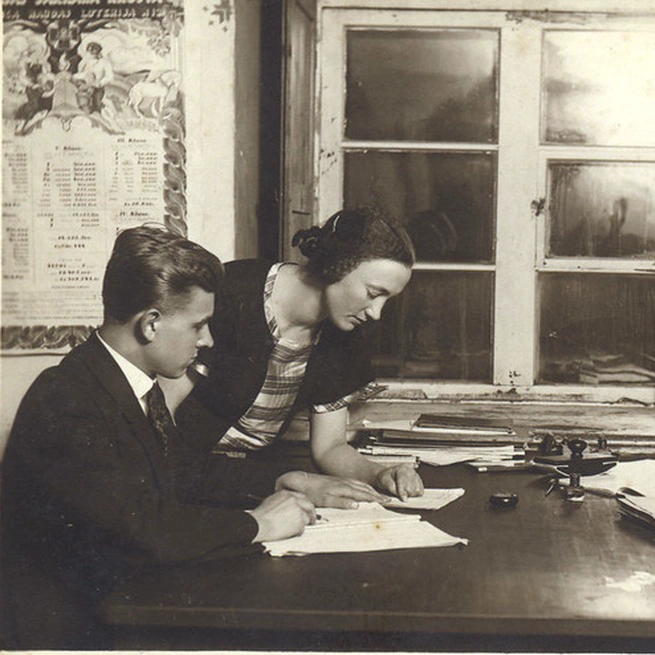
I have good memories from Prauliena. We were all young: the manager was 27, and the cleaner, Ida Darkevics, was 26-27. Pay was also good; 100 lati and 3 santimi for first-quality butter. This came to 140-150 lati a month, which was good pay at the time (a part-experienced government worker would get 60 lati a month.) Also, all milk products were free: butter, milk, cream, cream cheese, as well as a room and heating. We bought very little; if we made a vegetable soup with lamb we all shared it. I bought all new clothes, the latest fashions; I was a real city boy now, not a country boy. Then I bought a push-bike.
Jan 28, 2010
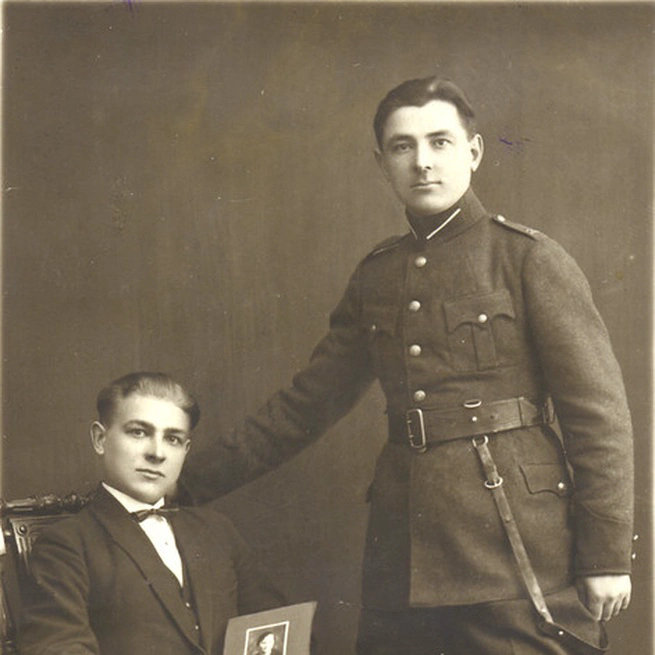
I was assigned to the Latgale artillery corps which was stationed at Krustpils. On arrival there were about 1000 new recruits, we were lined up and divided into batteries. First all the university students were called out, then those that completed high school and those who had not completed high school. Then tradesmen and other workers were called. I applied as a milk factory bookkeeper and was assigned to headquarters as a bookkeeper. For army training I was assigned to the 4th battery for two months.
Jan 29, 2010
As bookkeepers we were in a privileged position. On Friday afternoon we wrote our own leave passes and handed them to the adjutant to sign, most weekends we had two days free. The pass was meant to be for the local district only, but I used to go to my last work place – Prauliena. One of the bookkeepers had received a good bicycle from home, so at sunrise on Saturday mornings I used to set out on it. It took two hours to get to Prauliena. There I got dressed in my officer’s uniform and went to balls with my old girlfriends. On Sunday afternoon I set off for the return journey to Krustpils.
Jan 30, 2010

About two weeks later I was notified through the district town hall telephone (there were still no telephones in the country ) that I had a managerial job at Rauza, near Smilene, 15 kilometres towards Polsmane. I went straight away; first to Prauliena to get my things: bedding, work clothes, etc. I arrived at Prauliena in the evening, collected my things and went straight to Madona station. I was very angry with Marija and did not even say good-bye. Rauza was near a main highway in Vidzeme, about 2 kilometres. There to receive me was a committee member, Lacitis, who lived next to the factory. The factory was in the Rauza manor, opposite there was the district town hall, one shop, a blacksmith, and the district hall. It was a small centre. It took only one day to get to Riga. In the morning at 5 AM, a bus on the highway got you to Riga at 8 to 8:30 and in the evening it left Riga at 4 PM. The factory was quite small and was in the process of being changed from manual to steam. The steam generator was already there, but the milk was heated over water which was heated by steam, the same went for the cream in special cans. There were no collection points – all the milk used was brought in by the farmers directly. There were only two of us working; the general worker and the cleaner, a 19 or 20 year old youth, Janis Mietins, very obedient and hard-working, but not too intelligent.
Jan 31, 2010
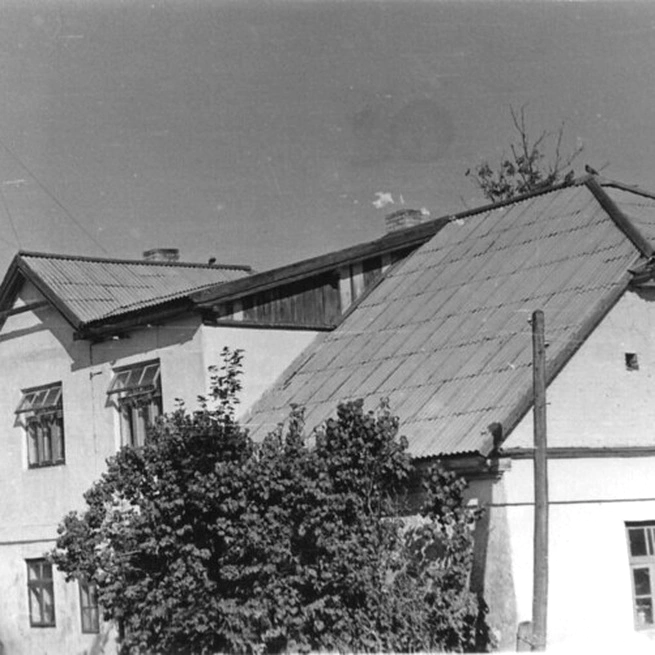
I arrived at Snepele in June, 1930. I first stayed at Strautmali because the outgoing manager had not yet left. Passing through Riga, I went shopping. I bought a dark blue suit, pale slacks, and white shoes, which were the latest fashion. And I had my record player.
Jan 31, 2010
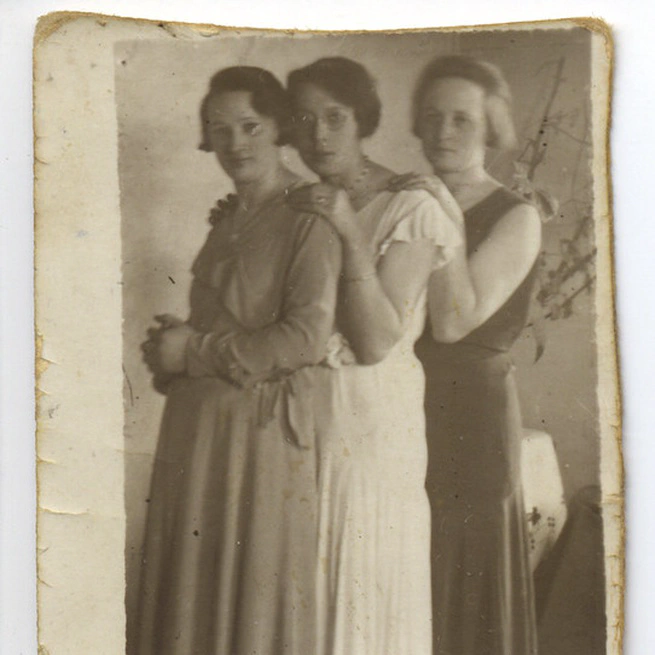
I had an excuse to make Ingas my first call in Snepele as it was a cream collection point. So the following Sunday after work I went to Ingas. I also knew there were four daughters as I had met them before when I was in the reserve army and came home for Christmas. We went to Biezaisi where we had an invitation to go to Ingas to celebrate all together. The four daughters were the oldest, Marta, Paula, then Konstance and the youngest, Milda at 17, well grown and very shy. I liked her from the first time I saw her and got her to dance with me even though she was so shy.
Feb 2, 2010
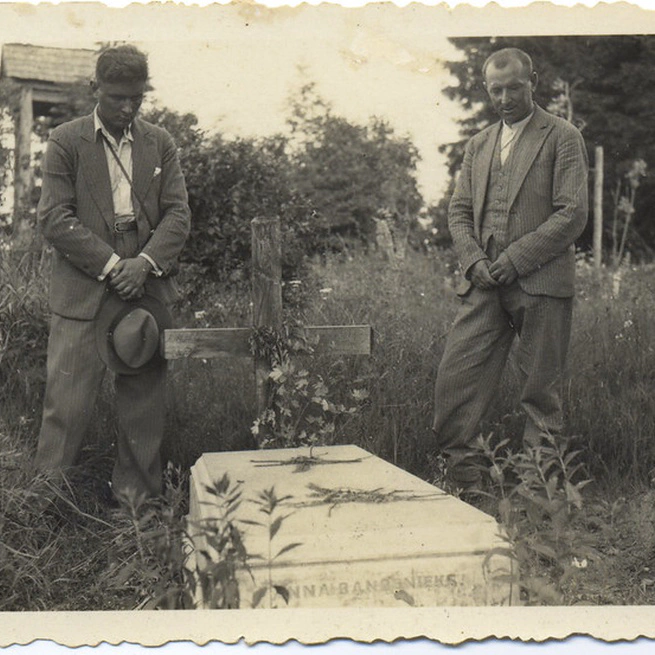
After about six months in Snepele my mother died, it gave me a big shock. Her intestines had twisted and she was taken to Kuldiga hospital where they operated, but it was too late. I was going to see her every day, 20 kilometres on my bicycle, but she died within a few days. I bought the coffin myself, as my brothers were not prepared to pay anything. I was very upset when I went to Ingas, we were close friends with Milda by then, and she comforted me which made us even closer. Milda’s brother Adolfs harnessed two horses to the best sprung carriage and we went to my father’s farm for the funeral. Mother’s brother had come from Pavilosta (where mother was born) where he was a director of a Baptist wind ensemble. My oldest brother carried the cross and the other four sons carried the coffin and we lowered it in the grave. It was autumn.
Feb 3, 2010